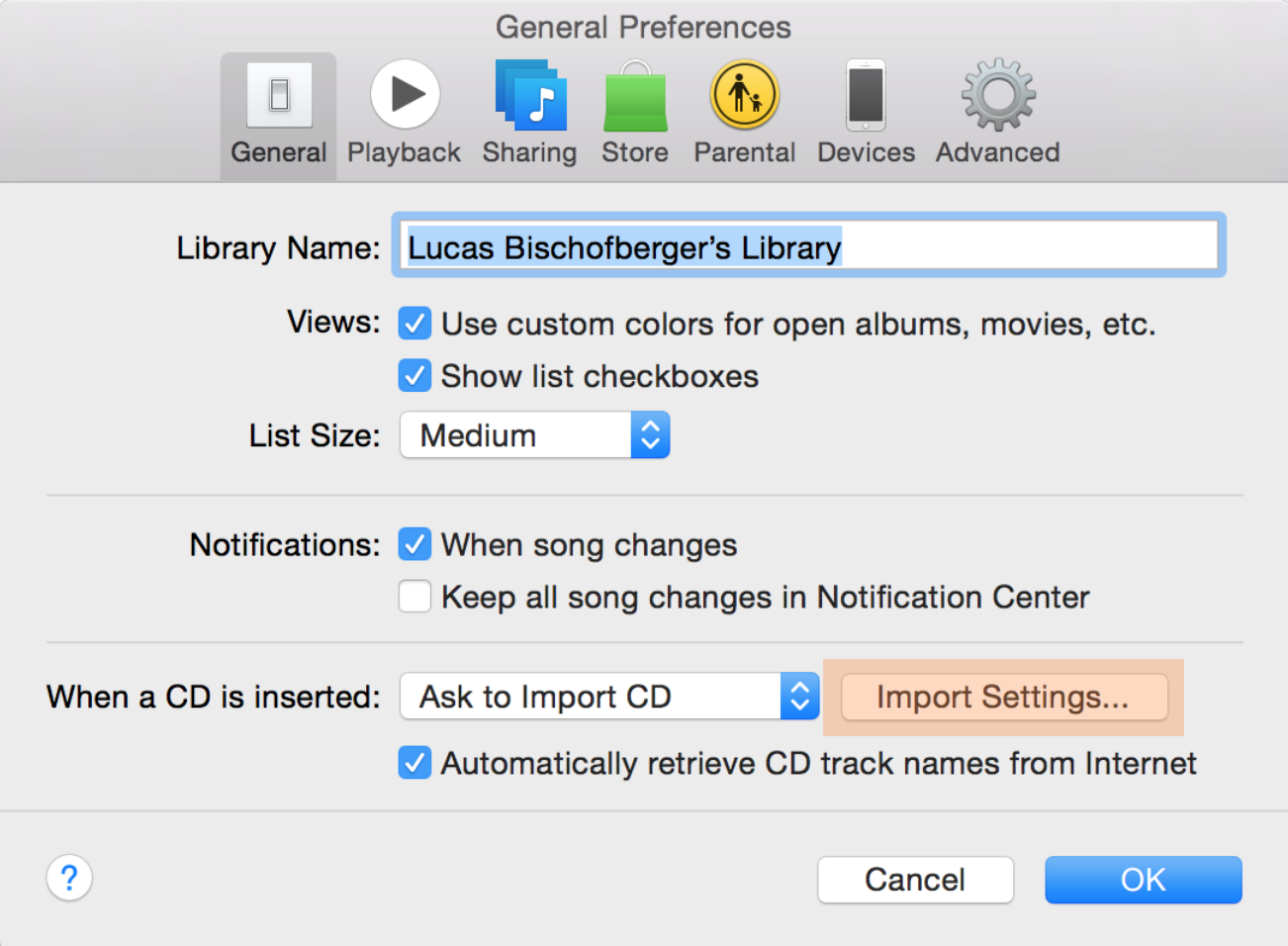

There are several advantages to using compressed format on iPods. Note that for equivalent file size, AAC is generally reckoned to give better quality audio than MP3, but MP3 is a much safer choice if you want to send the file to someone else. In that case either export as MP3 from Audacity, to any convenient location, for import into Apple Music/iTunes or import WAVs and set Apple Music/iTunes to convert to MP3 rather than its default AAC. Or you may wish to use MP3 files in your Apple Music/iTunes library instead of AAC. Yet another option is to set Apple Music/iTunes to convert to Apple Lossless which has about half the file size of WAV. In that case you should omit this conversion step and the next step which deletes the WAV files from your Apple Music/iTunes library. If you have plenty of room you may wish to keep the WAV files in your Apple Music/iTunes library to for their lossless quality and not convert them to AAC. Latest versions of Apple Music/iTunes will play them, but other players may not. These files will theoretically be of marginally higher quality but twice the size of 16-bit files. It is possible to export 32-bit PCM files too, by choosing "Other uncompressed files" in either export dialog, then clicking Options. Advanced users can change the type of dither, or turn it off, in the Quality Preferences.ġ6-bit export will ensure the files are compatible with all versions of Apple Music/iTunes, They will also be compatible for conversion to AAC or other formats (or for CD burning) in Apple Music/iTunes. Audacity will down-sample from its 32-bit internal format to 16-bit, with shaped dither noise applied to cover any clicky noise that may result from the conversion to 16-bit. With Audacity set to a project rate of 44,100 Hz and 32-bit sample format (these are the default quality settings), exporting will by default produce 44.1kHz 16-bit PCM WAV files (or AIFF files on Mac). Use Export Audio or Export Multiple to produce a WAV file or set of WAVs to any convenient location. Optional direct AAC export from Audacity.Delete the Audacity project and exported WAV files to release hard disk space.Backup your updated Apple Music/iTunes library.Optionally make a CD - and create cover & playlist.Edit the metadata tags of the tracks/album.Use Apple Music/iTunes to make AAC copies in the library from the WAV files.Use Apple Music/iTunes to edit the metadata for the album name and artist.


Many Apple Mac users would probably prefer to work in AIFF. You can work in AIFF rather than WAV if required. Like any recipe it can be adapted to suit your personal needs. It is not the only way of working - there are many alternatives. Some users may prefer to use uncompressed WAVs or AIFFs or compressed Apple Lossless formats for their music files in Apple Music/iTunes. The workflow concentrates on AAC music files because that is Apple's native, default, format. This tutorial outlines a set of example steps that can be used to get Audacity Projects (LP and tape transcriptions for example) into Apple Music/iTunes.


 0 kommentar(er)
0 kommentar(er)
